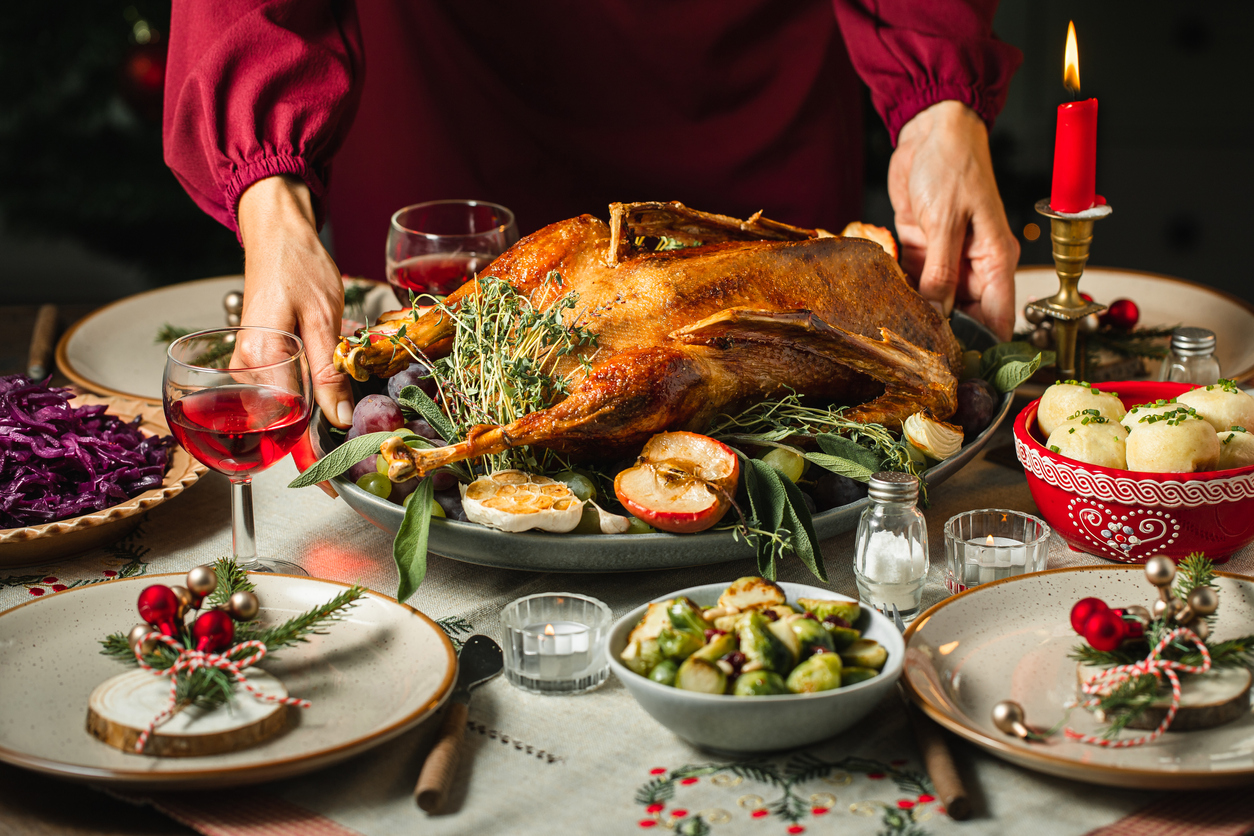This year A Christmas Carol is 180 years old, first published in December 1843. It had sold out by Christmas Eve. And it has a lot to answer for, not simply because it ultimately spawned Kelsey Grammer’s Christmas Carol musical, but because it is credited with having popularised the idea of turkey as a festive staple. As you’ll recall, turkey is what Scrooge has sent to his clerk Bob Cratchit once he’s had his Damascene moment – and the idea took off. Within a few short years (1861 in fact), Mrs Beeton had declared that ‘a Christmas dinner, with the middle classes of this empire, would scarcely be a Christmas dinner without its turkey.’
Drier than a month in the Priory, turkey is proof of man’s slavish submission to tradition
Drier than a month in the Priory, turkey is proof of man’s slavish submission to tradition. How can this pale, insipid, flavourless foul really be considered worthy of celebrating the birth of the Saviour of humanity? That’s why Dickens has a lot to answer for, albeit with a little help from others, not least Bernard Matthews, the 20th century’s turkey-pusher-in-chief. Because regardless of how you dress it, cook it or reheat it, a roasted turkey is a fundamentally bland disappointment of a dish.
Well, we know the answer: first, most people in Britain are functioning atheists, and so the Saviour scarcely is the first thing on their postprandial minds as they unbuckle their belts. And, second, it is surely what is served with the turkey that maintains its survival at the centre of our Christmas lunches – whether it’s the roasted ham or potatoes, the ingeniously cooked stuffing, the pigs in blankets, the richly buttered vegetables or cranberry sauce. A modern Christmas dinner is as much about the turkey itself as Strictly is about the Charleston or Argentine Tango; the foul is merely a foil and, because we only have it once a year, it’s become a novelty, one we can usually just about tolerate.
That turkey’s greatest culinary destiny is to be smothered in Hellmann’s mayonnaise on Boxing Day reveals its intrinsic gastronomic worth: it is a vehicle for eating emulsified rapeseed oil flavoured with egg, vinegar and lemon juice concentrate… and delicious it is too.
Beef, lamb, pork, duck or goose or indeed any number of other Christmas lunch options are at their best when served at the dining table rather than eaten furtively, direct from the fridge. Dare I say it, even chicken – the Ford Fiesta of the animal kingdom – boasts a superior flavour and texture. And let us not forget that the turkey is also an extremely ugly bird, perhaps the only denizen of the animal kingdom that resembles road kill even while it’s still very much alive. It’s basically a walking biopsy.
Once upon a time, turkey made sense because of our enormous Victorian families. But for the modern nuclear family with perhaps a grandparent in tow – turkey is not only tasteless, but it’s far, far too big. At seven or eight kilos for even a small bird (which will set you back perhaps £70 or £80), you have the equivalent in chicken terms of about four birds, yet with an eighth of the flavour.
Even if you buy the most stunted bird you can, you have days ahead of you, where all it’s good for is polishing off yet another jar of emulsified rapeseed oil mixed with egg and vinegar. And yet, it remains the Christmas staple. What proportion of the ten million or so British turkeys that are slaughtered for the annual festive binge is actually eaten, rather than thrown away? Or turned to rancid coronation turkey or frozen with good intentions, only to be wasted later when discovered buried at the back of the freezer?
And that’s why I think we should slay this Dickensian goose once and for all and authorise the publishers of A Christmas Carol – like those who would seek to posthumously edit Agatha Christie, Roald Dahl or Ian Fleming – to rewrite the ending of the book so Scrooge sends something different to Bob Cratchit and his enormous brood. The truth is a goose would have done the hungry Cratchits better — cooked, it’s packed with more calories per 100g than turkey has, and it’s got the same if not more goodness when you look at the vitamin count, not to mention oodles more flavour. It’s also got buckets of fat for roast potatoes.







Comments